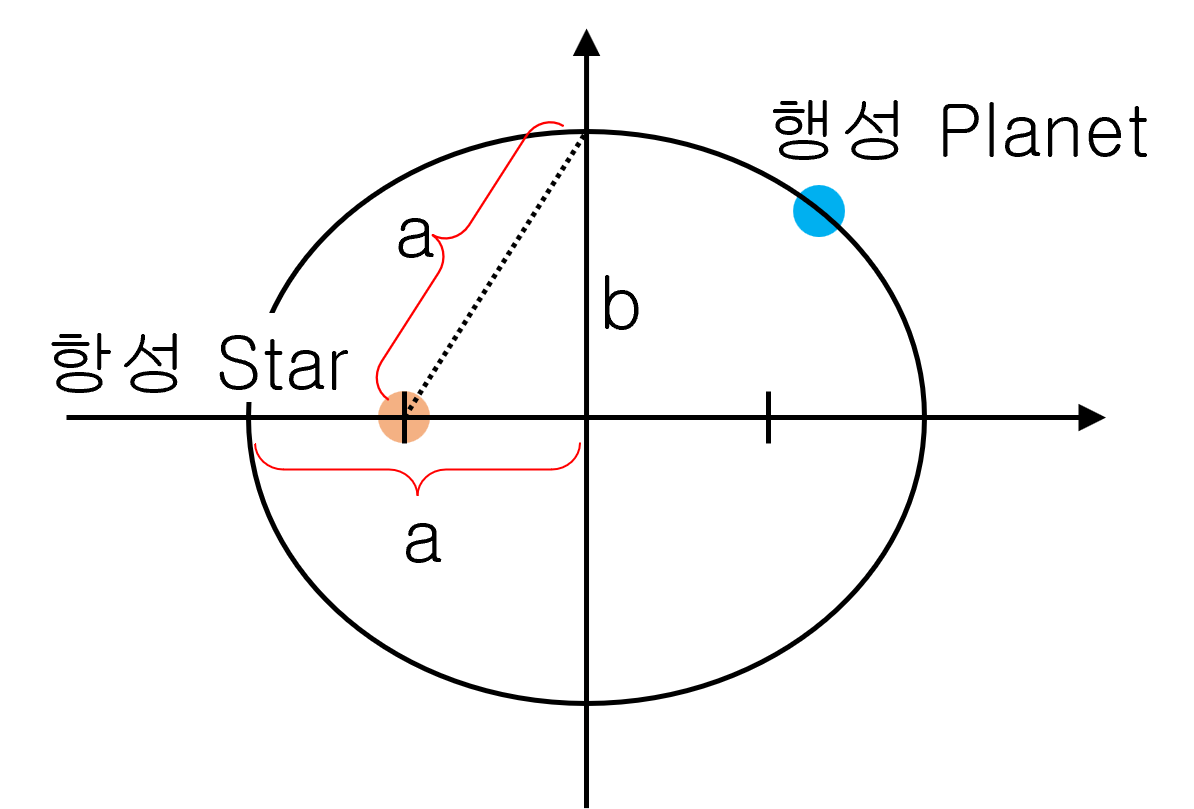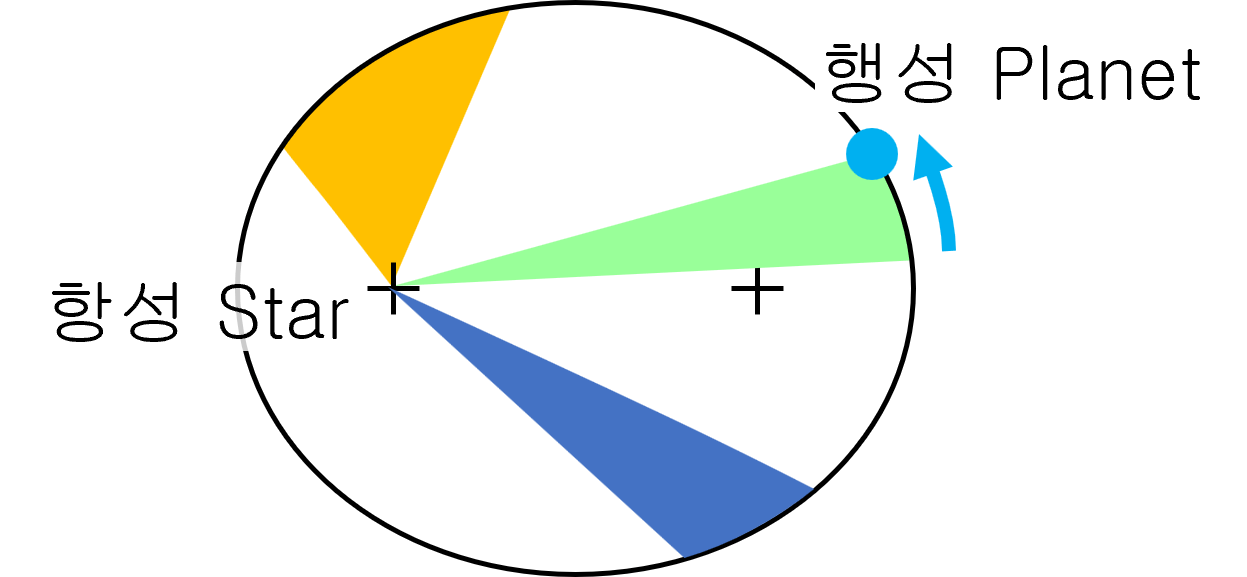Kepler and Tycho Brahe
There is an astronomer before talking about Kepler (Johannes Kepler 1571 ~ 1630). That's Tycho Brahe.
Tycho Brahe (1546-1601) is a famous Danish astronomer. With the development of astronomical equipment, he left a vast amount of information about the stars' location, and he made a great contribution to the development of astronomy.
When Brahe died, Kepler was asked to organize observational data accumulated for 16 years. Based on these data, he published Kepler's first and second laws in 1609.
Kepler's law is known to have contributed greatly to establishing Newton's laws of mechanics. Newton is said to have been deeply impressed with Kepler's law.
In other words, Kepler's law has made great progress in physics as well as astronomy.
First law of Kepler (Law of orbits)
The orbit of every planet is an ellipse with the Sun at one of the two foci.

Second law of Kepler
A line joining a planet and the Sun sweeps out equal areas during equal intervals of time.

Third law of Kepler
The square of the orbital period of a planet is directly proportional to the cube of the semi-major axis of its orbit.
\[ (orbital\,period(P))^{2} ∝ (semi-major\,axis(a))^{3} \]